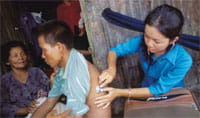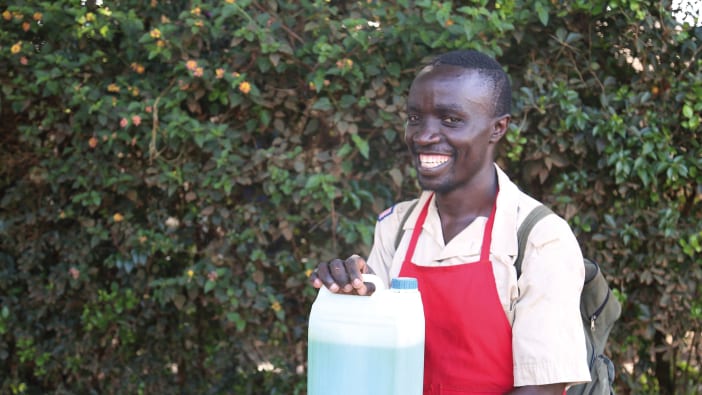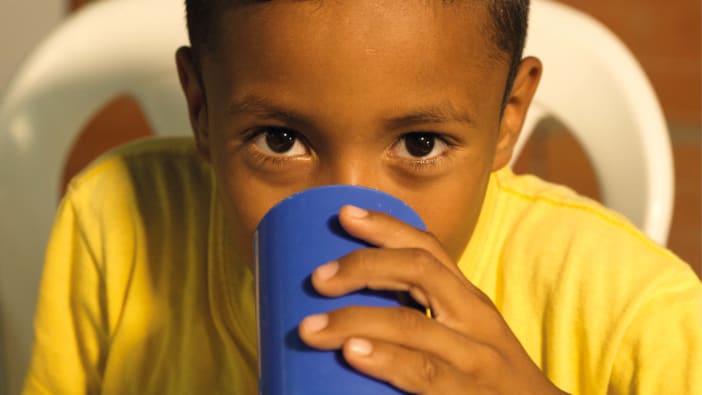Think about the last time you were ill at home and realised you needed to get treatment. Did you have to go to a health centre, get to hospital or was there some way you could get diagnosed and treated at home? In poor rural and urban areas across the world, three quarters of cases of illness could be recognised and treated within the household.
Most of the world’s doctors, nurses and health professionals are working in wealthier countries, or in the richer suburbs of cities. So in poor, remote areas where they are needed most, there are often none. There have been many recent advances in medicine and health care, but in the poorest countries life expectancy is falling, often due to weak health care systems.
The World Health Organisation reports that 1.3 billion people have no access to formal health care. Globally, that is about one person in five. In remote areas and in the poorest parts of the world almost no-one has access to life-saving treatment. Only those who are well enough or rich enough, or who have relatives able to help them, are able to travel to a health centre.
Empowering communities
Along with health care colleagues from Emmanuel Hospital Association in India, I was involved for many years in setting up programmes which trained local people in remote communities simple techniques that they can use to treat these illnesses at home. The process began by meeting with local people, hearing about local health needs and listening to their suggestions. Then in each group of villages, one or two volunteers were trained as health workers. They were shown how to recognise and treat the most common local diseases. They were given medicine boxes, and became skilled in using them.
Gradually these health volunteers trained parents in their communities about how to recognise and treat these illnesses in their children. So a programme that had started with a doctor in a distant hospital, spread through the volunteer community health workers to household members. It took several years before people were confident, but now people in the community realise that they have the skills and knowledge to provide basic health care for their family in their home.
Treating common illnesses
Apart from tuberculosis (TB) and HIV, most common illnesses have a relatively simple cure. Millions of people die each year from pneumonia, diarrhoea and malaria. But it is often possible to treat or prevent these illnesses at the household level.
PNEUMONIA Fast breathing (more than 40 breaths each minute) is a sign of pneumonia. If pneumonia is recognised it can be treated with antibiotics. Ensure the person drinks plenty of liquid. To reduce fever, remove any extra clothing, and if necessary give paracetamol (but not aspirin). Give antibiotics and seek immediate medical attention, preferably at a hospital, if:
- there is difficult, noisy breathing, with the ribs drawn in
- the person’s lips turn blue
- the person is unable to drink, or vomits everything
- there is drowsiness, unconsciousness or convulsions. Pneumonia may follow measles, whooping cough (pertussis) or TB, so immunisation against these diseases helps to prevent pneumonia.
DIARRHOEA Except in very severe cases, diarrhoea can easily be treated in the household (see page 1). Usually no antibiotics are necessary.
MALARIA It is not always easy to recognise malaria, as the signs vary from place to place. Treatment also varies. Carefully trained health workers can learn the typical signs of malaria in their area, and follow national treatment guidelines. Up-to-date guidelines and advice are available from www.who.org/malaria. To help prevent malaria it is important that in malarial regions all children always sleep under bed nets that have been treated with insecticide.
As part of our community health programme in India, the most vulnerable households would be given supplies of malaria treatment and antibiotics with careful instructions following national guidelines, so they could start treatment immediately, even before calling out the village health worker. There are potential dangers in this, so it is very important that caregivers are well trained in when and how to use these medicines. They need to follow well-established guidelines as part of a well-managed programme.
This radical approach of empowering communities to provide their own health care at the household level is becoming increasingly common in countries across the world. It can save lives in poor areas where there is a lack of trained health professionals. Setting up these programmes is within reach of most communities, and within the capability of most health workers who have passion and determination. Non-infectious diseases such as mental health, epilepsy and diabetes should also be included in the training programme. It is important that these programmes follow evidence-based and good practice guidelines, and that wherever possible they are integrated with, and work alongside, government health services.
Dr Ted Lankester is the Director of Health Care at InterHealth and of Community Health Global Network. For details on how to join this network on-line free of charge, and to access information on health topics, see the website www.chgn.org
For more information on community health needs, see his book Setting up Community Health Programmes (2007 Revised Edition), published by MacMillan. Details of how to obtain this are also on the website.
‘Time and again we see how, when communities are given opportunities they want and programmes they can own, they are empowered to achieve the lives they desire. We see this with programmes where communities take charge of disease detection and drug distribution, with rapid and sustainable improvements in health.’
Dr Margaret Chan, Director General of the World Health Organisation, 2007










